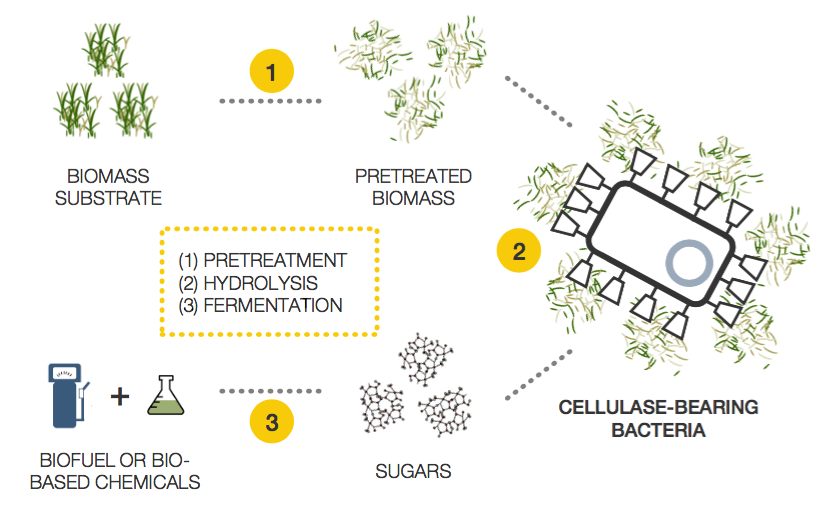The Problem We’re Solving
Palm oil is the world’s most important vegetable oil. Its unique properties make it a key ingredient in food, cosmetics, washing agents, colors amongst others. However, the production of palm oil is controversial. Not only are indigenous forests being replaced by monocultures. In addition, the production of palm oil leads to the formation of vast volumes of solid and liquid wastes. One of those waste byproducts are so called empty fruit bunches. Every year, approximately 20 million metric tons of EFB are being generated in Malaysia alone. Most of the EFB piles up at waste disposal sites or plantations. Disposal has become a serious concern for palm oil producers in recent years, as the natural degradation of EFB leads to formation of the greenhouse gas methane. All large scale approaches to utilize the biomass have been unsuccessful, so far. Therefore, PATHWAY-EFB significantly contributes to the fight against climate change.
Who’s involved?
The PATHWAY consortium consisting of Autodisplay Biotech GmbH (Düsseldorf, Germany), FraunhoferUMSICHT (Oberhausen, Germany), Westfälische Wilhelms-Universität (Münster, Germany), Universiti Malaysia Sabah (Kota Kinabalu, Malaysia) and Aum Capital (Kuala Lumpur, Malaysia) is focused on the development of a process fine-tuned for the conversion of empty fruit bunches (EFB) to fermentable sugars for the production of high value biochemicals.
What’s different?
The project builds onto Autodisplay Biotech’s proprietary Cellulase Technology which enables a low-cost recovery and re-use of cellulases during saccharification. This is, because enzymes are anchored in the cell surface of bacteria which makes the Pathway process unlike any other saccharification process. The saccharification efficiency is held at highest levels at all times. Feedback inhibition through glucose – a serious concern for standard approaches – can be circumvented. That’s why the release of fermentable sugars is much higher compared to ordinary processes, ultimately resulting in smaller biorefineries or lower required capital investments. As soon as saccharification efficiency falls below a certain level, three streams are being separated: sugar solution, cellulases and remaining lignocellulosic biomass. Cellulases are then quickly fed back into the saccharification vessel to further release sugars.
Scheme of the Cellulase Technology the Pathway Process is based on:

